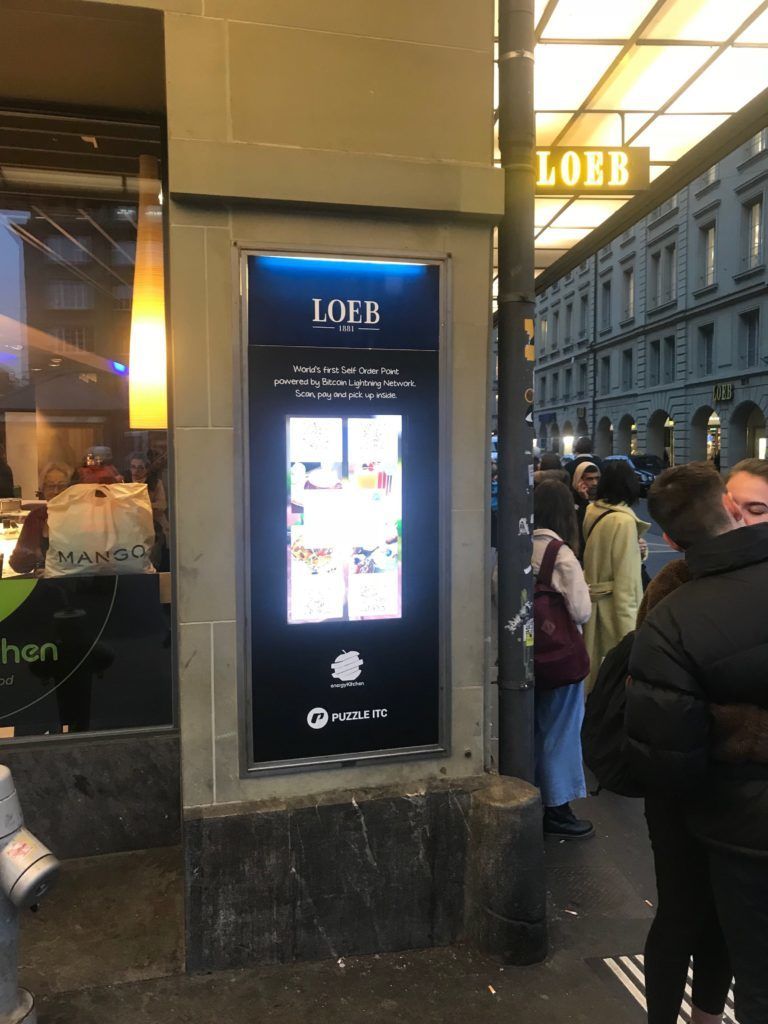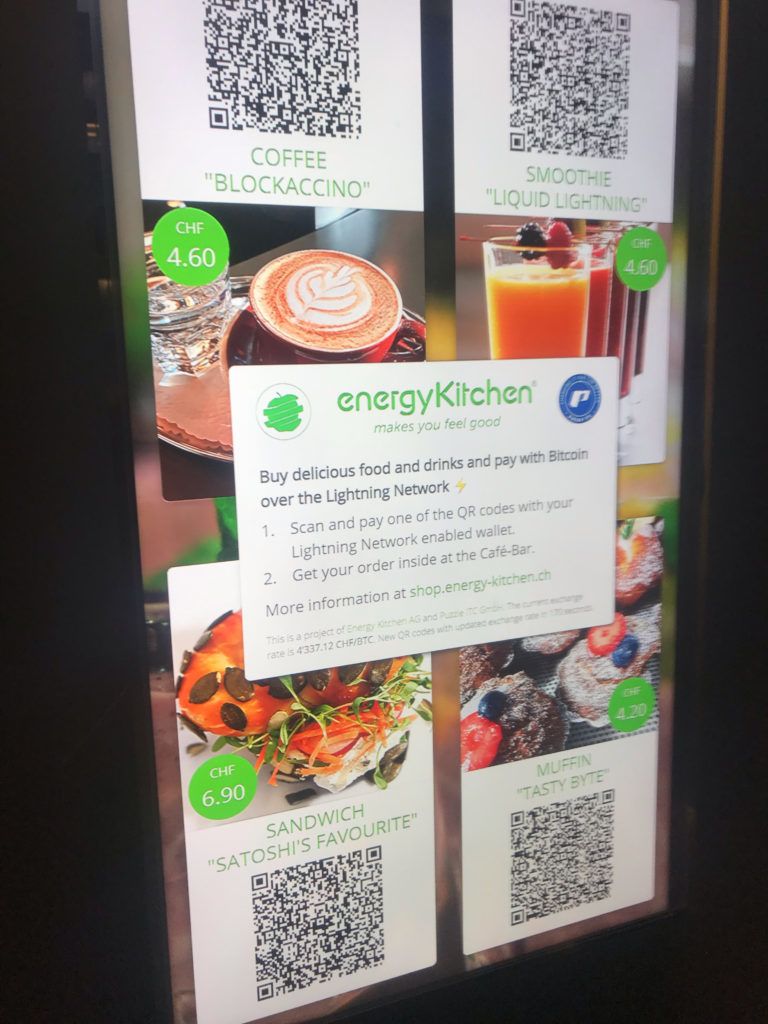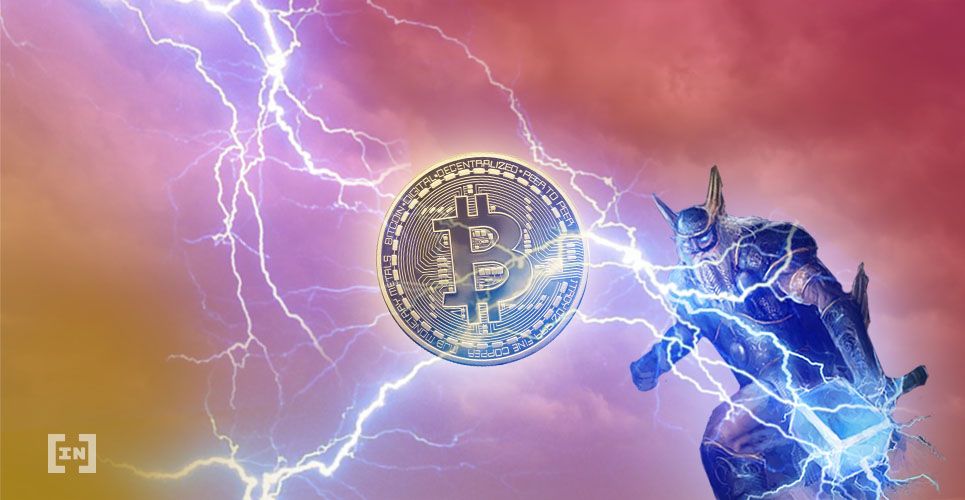The recent turbulence of the cryptocurrency market has opened old wounds for blockchain technology.
For cryptocurrency and Bitcoin to compete on a global scale for payment transactions, the number of transactions per second (t/xs) must match demand. Bitcoin must also satisfy the market’s desire for micro-transactions. Paying for a beer in Bitcoin is not economically feasible with the current state of the protocol.
For fans of cryptocurrency, the Bitcoin Lightning Network promises a scalable solution with real-world examples.
This article will lay out how exactly this new system works, and explore some of the more technical ideas propelling Bitcoin into the future.

Understanding Current Speedbumps to Global Bitcoin Adoption
Scalability of the Bitcoin blockchain is not feasible with the current protocol. Current transaction capabilities are hovering around 7 t/xs, which is abysmal compared to Visa’s 24,000 t/xs. Clearly, the technology is not capable of hosting the world’s digital transaction needs in its current state. Solutions to this problem are being presented and discussed in development circles worldwide. One such solution is to increase the block size.Proposing a Larger Blocksize to Facilitate More Transactions
Every block in the Bitcoin blockchain holds information proving a transaction has taken place. When blocks are verified, the transactions are verified. The more transactions that can fit inside a block, the more transactions per-second can take place. One solution being argued is to double the current blocksize from 4mb to 8mb. This would theoretically double the number of transactions able to take place, reduce fees, and apeed up the network. Unfortunately, an update of this magnitude will have widespread consequences:- Increasing block size from 4mb to 8mb would make the mining of Bitcoin extremely difficult by requiring huge amounts of data to be stored and verified.
- Larger data requirements make mining more expensive.
- Expensive mining rigs create a barrier to entry for new miners.
- Fewer miners inevitably lead to the centralization of the Bitcoin network.
Micropayment Channels
The blockchain works by tracking every transaction made between individuals and recording each one to ensure trust in the protocol. As the network scales, it becomes bloated from relatively small p2p transfers that are of little importance to the overall network. Allowing for a series of transactions to occur off the main blockchain reduces bloat and has the potential for scalability on a global scale. After a series of transactions are complete, the final total of BTC can be verified via the original blockchain. This is the underlying idea of the Lightning network. Creating a micropayment channel allows for an unlimited number of transactions to occur between individuals without charging transaction fees or waiting for the original blockchain to catch up and verify transactions. The final total of BTC between each party is deferred to the original blockchain upon closure of the payment channel by either party. In this way, micropayments are not a separate network but are legitimate BTC payments that exist with the safety and immutability of the underlying protocol. The second layer network exists independently of the logistical cataracts of scalability faced by the verification of each and every transaction after it is made.Solving the Problem of Trust With Micropayments
Opening a payment channel requires both parties to transfer BTC to the wallet. This creates an escrow account from which transactions can take place. Now that BTC is securely validated to be in the separate payment channel, each party can send and receive payments to each other without waiting for the underlying blockchain to validate each transaction. For a payment to be valid, each party involved with the payment channel must verify it. If verification does not happen, then each party is refunded the original amount put into the channel.How does bitcoin lightning network work?
In order for microtransactions to take place, users must be able to spend transactions that are “unsigned” or not verified by the blockchain. The following steps illuminate how this is done:- Create the transaction total.
- Both parties transfer BTC into the payment channel.
- Conduct transactions to each other using the BTC in the channel.
- Each person signs their own confirmation of transactions.
- Keys are exchanged which allows the other party to confirm the other person’s transactions, known as the “children”.
- Each party confirms the original amount of BTC by signing the first transaction total, known as the “parent”.
- The parent keys are exchanged for confirmation by both parties.
- The final transaction is broadcast to the blockchain, verifying the final output and closing the micropayment channel.

Scalability Issues Solved Through Micropayment Channels
1:1 transfers are proven concepts through the creation of escrow-like payment channels. However, this does not solve the issues of scalability on a global scale. It is highly improbable for everyone on the BTC network to create a 1:1 payment channel with every party they wish to interact with. By linking all payment channels to each other, transactions can occur between nodes hosting such micropayment channels. In this way, users have no reason to create an escrow-like account with the party they are transferring funds to. Instead, they could create a cryptographic hash which would encrypt the payment and direct it through existing nodes to the desired output address. Think of it like sending a BTC payment from one wallet to the next without having to pay or wait for the miner transaction fees.This Requires a Hashed Timelock Contract (HTLC)
By using time as a measure of an open contract, payments can be sent across nodes, facilitating a global level of the transaction. Individuals on the receiving end only need the correct input to verify the transaction. This locks the payment, preventing other nodes from opening it and, in effect, stealing it. Time is verified via the blockchain, counting the number of completed blocks – one block is verified roughly every ten minutes. Let’s explore how HTLCs work in the Lightning Network.- The receiver must be able to open the payment within the agreed upon time frame. Generally, the time is set in the short-term, three days for example.
- If the transaction goes unclaimed for the agreed upon time, then it is null and void.
- The contract may be closed out before the agreed-upon deadline — and most likely it will be.
- Any violation by either party forfeits 100 percent of the funds to the honest actor.
What Fees Are For
The time-value of conducting HTLCs across nodes in the network requires incentivization to keep nodes operational for transactions and for the opportunity to confirm transactions on the blockchain when a channel is closed. Because a single node can validate multiple transactions on the blockchain at once, it allows fees to be relatively low. With enough nodes hosting payment transactions, the fees would become lower and lower as competition for transaction fees increase and the difficulty of finding a node to facilitate the transaction decreases.Transferring Information Between Nodes
A multi-hop transfer is used to send funds between the receiver and receive of BTC. Each node is connecting to other nodes within the network. More trusted nodes will have more connections, allowing more payments to be routed through them. These “central nodes” are incentivized to host transactions because of the fee structure. Other nodes, such as individuals wishing to simply receive or send funds, are located on the periphery of the network. These nodes are not required to remain online for the transaction to take place. Competition for new transactions will bring more and more nodes online. Because hosting nodes is less resource intensive than mining, even a simple household computer can host thousands of transactions. The relatively low cost of capital to be a node will encourage a decentralization of the Lightning Network, which, theoretically, if grown large enough, will provide transactions for such small fee users will not even notice. Alternatively, paths that are experiencing low volume will have “negative fees” and actually pay users to use the path.
The Bitcoin Lightning Network Solution
Bitcoin’s underlying blockchain protocol is too slow and burdensome to create a system capable of hosting the world’s digital financial transactions. Credit card companies are still faster and more convenient, leaving many skeptical of Bitcoin’s ability to disrupt the current payment system we have now. To fix the problems of scalability, high transaction fees, and lack of micropayments, a second-layer software solution is being developed known as the Bitcoin Lightning Network.- Built on top of the existing Bitcoin Protocol. No hard fork is required to implement the Lightning Network.
- Creates a network of nodes to facilitate transactions. Everyone with a computer can help host the network.
- Allows for unlimited microtransactions with astronomically small fees. 1:1 transfers are theoretically infinite.
- Incentivizes a 2nd-layer of transactions without weighing down the original blockchain.
When Will Bitcoin Lightning Network Be Available?
The lightning network is currently operational, albeit not functional on a global scale… yet. Puzzle ITC is a company developing an app that makes buying beer with Bitcoin easy, without excessive transaction fees. More real-world examples are coming online every day. The demand to make Bitcoin the default global transaction system is going to take more work than many initially thought but the Lightning Network is already proving itself as the first step in Bitcoin global domination. What are your thoughts on the Bitcoin lightning network? Let us know in the comments below!
What are your thoughts on the Bitcoin lightning network? Let us know in the comments below!
Top crypto platforms in the US
Disclaimer
In adherence to the Trust Project guidelines, BeInCrypto is committed to unbiased, transparent reporting. This news article aims to provide accurate, timely information. However, readers are advised to verify facts independently and consult with a professional before making any decisions based on this content. Please note that our Terms and Conditions, Privacy Policy, and Disclaimers have been updated.
Joel Salvino
Joel is an expert in SEO writing, social media campaigns, research, ROI, analytics, Google AdWords, Facebook Pixel, and video editing. He develops marketing campaigns designed to grow a community, educate newcomers, and push cryptocurrency to mainstream adoption.
Joel is an expert in SEO writing, social media campaigns, research, ROI, analytics, Google AdWords, Facebook Pixel, and video editing. He develops marketing campaigns designed to grow a community, educate newcomers, and push cryptocurrency to mainstream adoption.
READ FULL BIO
Sponsored
Sponsored
